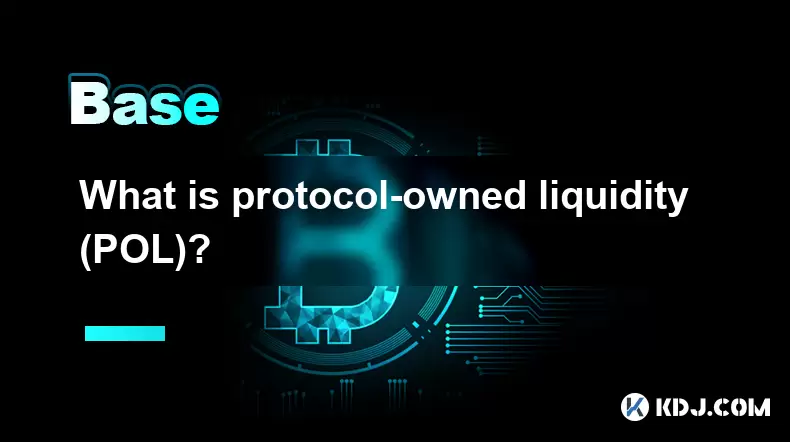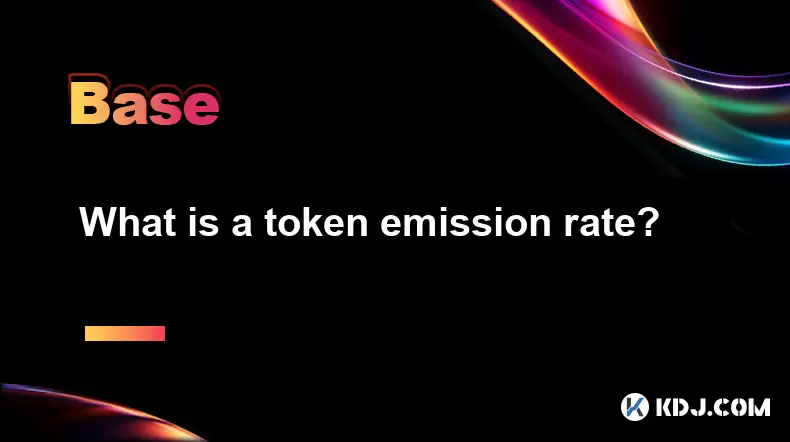-
 Bitcoin
Bitcoin $108,562.4295
0.46% -
 Ethereum
Ethereum $2,533.9553
1.52% -
 Tether USDt
Tether USDt $1.0002
-0.01% -
 XRP
XRP $2.2542
2.23% -
 BNB
BNB $662.4567
1.48% -
 Solana
Solana $151.4114
3.48% -
 USDC
USDC $0.9999
0.00% -
 TRON
TRON $0.2860
0.91% -
 Dogecoin
Dogecoin $0.1685
3.72% -
 Cardano
Cardano $0.5809
1.63% -
 Hyperliquid
Hyperliquid $39.2916
1.85% -
 Sui
Sui $2.8874
0.85% -
 Bitcoin Cash
Bitcoin Cash $496.5801
2.72% -
 Chainlink
Chainlink $13.3582
2.48% -
 UNUS SED LEO
UNUS SED LEO $9.0279
0.07% -
 Avalanche
Avalanche $18.0773
2.30% -
 Stellar
Stellar $0.2426
3.05% -
 Toncoin
Toncoin $2.9086
6.01% -
 Shiba Inu
Shiba Inu $0.0...01170
2.97% -
 Hedera
Hedera $0.1587
3.47% -
 Litecoin
Litecoin $87.4596
1.13% -
 Monero
Monero $317.0425
0.73% -
 Polkadot
Polkadot $3.3778
1.90% -
 Dai
Dai $0.9999
-0.01% -
 Ethena USDe
Ethena USDe $1.0001
-0.01% -
 Bitget Token
Bitget Token $4.4095
0.63% -
 Uniswap
Uniswap $7.3593
6.80% -
 Pepe
Pepe $0.0...09910
3.64% -
 Aave
Aave $274.7388
2.68% -
 Pi
Pi $0.4607
0.48%
What is protocol-owned liquidity (POL)?
Protocol-Owned Liquidity (POL) allows DeFi protocols to control their own liquidity, enhancing stability and reducing reliance on external providers.
Jul 07, 2025 at 02:50 am

Understanding Protocol-Owned Liquidity (POL)
Protocol-Owned Liquidity, commonly known as POL, refers to a mechanism in decentralized finance (DeFi) where a blockchain protocol directly owns and controls the liquidity in its native token pair on decentralized exchanges. Unlike traditional liquidity provision, where external users supply tokens to liquidity pools and earn fees, POL enables protocols to retain full control over their liquidity reserves, reducing reliance on third-party liquidity providers.
This model is especially popular among algorithmic stablecoins and yield-oriented DeFi protocols, aiming to ensure consistent liquidity without depending on volatile external incentives like yield farming rewards.
Why POL matters: It strengthens price stability, enhances trading depth, and provides long-term sustainability by eliminating impermanent loss concerns for the protocol itself.
How Does POL Work?
In a standard liquidity pool setup, users deposit two tokens—say, ETH and DAI—to create a liquidity pair. They receive LP tokens in return and earn a share of the trading fees. However, in POL-based systems, the protocol itself acts as the liquidity provider.
Here’s how it typically works:
- The protocol deposits its own tokens into a liquidity pool alongside a stablecoin or a widely-used asset like ETH or wBTC.
- These funds are stored in a smart contract-controlled treasury, ensuring that the liquidity remains permanent and is not subject to withdrawal by speculative actors.
- Instead of offering high APYs to attract liquidity providers, the protocol uses revenue from transaction fees, seigniorage, or other internal mechanisms to maintain and grow its liquidity position.
Key benefit: The protocol avoids the risk of sudden liquidity withdrawals, which can destabilize token prices during market downturns.
Use Cases of POL in DeFi Protocols
Several DeFi protocols have adopted POL strategies to strengthen their ecosystem resilience. Notable examples include:
- Olympus DAO: One of the earliest adopters of POL, Olympus introduced the concept of bonding mechanisms to acquire liquidity directly from users in exchange for discounted OHM tokens.
- Tokemak: A liquidity reactor platform that facilitates POL by directing liquidity to various DeFi protocols using its TOKE governance token.
- Frax Finance: Utilizes POL to back its fractional-algorithmic stablecoin with both fiat collateral and liquidity pool assets.
Strategic advantage: By owning liquidity, these protocols reduce slippage, improve token utility, and gain better control over their economic models.
Technical Implementation of POL
To implement protocol-owned liquidity, several technical components must be in place:
- Treasury Management: A secure and transparent treasury is essential to store and manage the liquidity assets. This is usually governed via DAO proposals or controlled by a multisig wallet.
- Bonding Mechanisms: Some protocols allow users to bond assets (e.g., LP tokens or stablecoins) in exchange for discounted native tokens. Over time, this builds up the protocol's liquidity holdings.
- Automated Rebalancing: Smart contracts may include logic to automatically rebalance liquidity positions based on market conditions or predefined thresholds.
Steps involved in setting up POL:
- Deploy a smart contract that can interact with decentralized exchanges.
- Allocate treasury funds to purchase LP tokens or provide direct liquidity.
- Lock liquidity permanently in a vault or use bonding curves to incentivize user participation.
- Monitor and adjust liquidity ratios through governance or automated strategies.
Critical component: Security audits and transparent governance are crucial to prevent misuse of treasury funds used for POL deployment.
Differences Between POL and Traditional Liquidity Provision
While both POL and traditional liquidity provision aim to facilitate trading on decentralized exchanges, they differ significantly in structure and outcomes.
- Ownership: In traditional models, liquidity is owned by individual users who can withdraw at any time. In POL, the liquidity is owned and managed by the protocol.
- Sustainability: Traditional liquidity often relies on high-yield incentives, leading to short-term liquidity farming. POL eliminates this dependency by locking liquidity permanently.
- Control: Protocols using POL can adjust liquidity parameters programmatically, such as reallocating assets or changing pool weights, without relying on external actors.
Operational difference: POL reduces impermanent loss risks for the protocol while increasing market confidence through consistent liquidity availability.
Frequently Asked Questions (FAQs)
Q1: Can any DeFi project implement POL?
Yes, technically any DeFi project with a treasury and governance system can implement POL. However, success depends on factors like tokenomics, market demand, and the ability to sustainably fund liquidity purchases.
Q2: Is POL compatible with all decentralized exchanges?
POL works best with AMM-based decentralized exchanges like Uniswap or SushiSwap. Compatibility depends on whether the DEX allows programmable liquidity management and supports locking mechanisms.
Q3: How does POL affect token holders?
Token holders benefit from increased price stability, reduced volatility, and potentially higher long-term value accrual since the protocol retains earnings from liquidity provision instead of distributing them externally.
Q4: What are the risks associated with POL?
Risks include exposure to impermanent loss (for non-stable pairs), potential mismanagement of treasury funds, and centralization if the POL control isn’t sufficiently decentralized through governance.
Disclaimer:info@kdj.com
The information provided is not trading advice. kdj.com does not assume any responsibility for any investments made based on the information provided in this article. Cryptocurrencies are highly volatile and it is highly recommended that you invest with caution after thorough research!
If you believe that the content used on this website infringes your copyright, please contact us immediately (info@kdj.com) and we will delete it promptly.
- Elon Musk, Andrew Yang, and Polymarket: What's the Buzz?
- 2025-07-07 10:30:12
- Lightchain AI's Bonus Round: The Final Chance Before Mainnet & Ecosystem Tools
- 2025-07-07 10:30:12
- TON Foundation, UAE Golden Visa, and Toncoin Staking: A New Chapter in Crypto Residency?
- 2025-07-07 10:50:12
- Altcoin Prices, Institutional Investors, and the Ethereum Rotation: What's the Deal?
- 2025-07-07 10:50:12
- TON Coin, Golden Visa, and UAE Denial: What's the Real Deal?
- 2025-07-07 10:55:12
- PEPE's Bullish Trend: Riding the 50% Gain Wave?
- 2025-07-07 10:55:12
Related knowledge

What is a user-generated content (UGC) NFT platform?
Jul 04,2025 at 01:49pm
Understanding the Concept of a UGC NFT PlatformA user-generated content (UGC) NFT platform is a digital marketplace or ecosystem where users can create, mint, and trade non-fungible tokens (NFTs) that represent ownership of original digital content they produce. Unlike traditional NFT platforms where creators often include professional artists or develo...

What is composability in DeFi?
Jul 06,2025 at 04:07pm
Understanding the Concept of Composability in DeFiComposability in DeFi refers to the ability of decentralized finance protocols and smart contracts to interact seamlessly with one another, much like building blocks that can be combined in various ways to create new financial products and services. This concept is a core innovation within the DeFi ecosy...

What is a "crypto primitive"?
Jul 05,2025 at 10:14pm
Defining the Concept of a Crypto PrimitiveIn the context of blockchain and cryptocurrency, a crypto primitive refers to a fundamental building block or foundational element used in constructing decentralized systems and cryptographic protocols. These primitives are essential for enabling secure transactions, consensus mechanisms, and smart contract exec...

What is a fair launch?
Jul 05,2025 at 07:31pm
Understanding the Concept of a Fair LaunchA fair launch refers to the release of a cryptocurrency or blockchain project in a manner that ensures equal opportunity for all participants. Unlike traditional token launches, which may involve private sales, venture capital funding, or pre-mining, a fair launch emphasizes transparency and decentralization. In...

What is a token emission rate?
Jul 07,2025 at 02:51am
Understanding the Basics of Token Emission RateIn the realm of cryptocurrencies, token emission rate refers to the speed or frequency at which new tokens are generated and released into circulation within a blockchain network. This concept is fundamental in understanding how certain blockchain ecosystems manage inflation, incentivize participants, and m...

What is a cliff in tokenomics?
Jul 05,2025 at 07:18pm
Understanding the Concept of a Cliff in TokenomicsIn the world of cryptocurrency and blockchain, tokenomics plays a pivotal role in shaping the economic behavior of a digital asset. One of the key mechanisms used to manage token distribution is known as a cliff. This concept is commonly applied in projects that include vesting schedules for tokens, espe...

What is a user-generated content (UGC) NFT platform?
Jul 04,2025 at 01:49pm
Understanding the Concept of a UGC NFT PlatformA user-generated content (UGC) NFT platform is a digital marketplace or ecosystem where users can create, mint, and trade non-fungible tokens (NFTs) that represent ownership of original digital content they produce. Unlike traditional NFT platforms where creators often include professional artists or develo...

What is composability in DeFi?
Jul 06,2025 at 04:07pm
Understanding the Concept of Composability in DeFiComposability in DeFi refers to the ability of decentralized finance protocols and smart contracts to interact seamlessly with one another, much like building blocks that can be combined in various ways to create new financial products and services. This concept is a core innovation within the DeFi ecosy...

What is a "crypto primitive"?
Jul 05,2025 at 10:14pm
Defining the Concept of a Crypto PrimitiveIn the context of blockchain and cryptocurrency, a crypto primitive refers to a fundamental building block or foundational element used in constructing decentralized systems and cryptographic protocols. These primitives are essential for enabling secure transactions, consensus mechanisms, and smart contract exec...

What is a fair launch?
Jul 05,2025 at 07:31pm
Understanding the Concept of a Fair LaunchA fair launch refers to the release of a cryptocurrency or blockchain project in a manner that ensures equal opportunity for all participants. Unlike traditional token launches, which may involve private sales, venture capital funding, or pre-mining, a fair launch emphasizes transparency and decentralization. In...

What is a token emission rate?
Jul 07,2025 at 02:51am
Understanding the Basics of Token Emission RateIn the realm of cryptocurrencies, token emission rate refers to the speed or frequency at which new tokens are generated and released into circulation within a blockchain network. This concept is fundamental in understanding how certain blockchain ecosystems manage inflation, incentivize participants, and m...

What is a cliff in tokenomics?
Jul 05,2025 at 07:18pm
Understanding the Concept of a Cliff in TokenomicsIn the world of cryptocurrency and blockchain, tokenomics plays a pivotal role in shaping the economic behavior of a digital asset. One of the key mechanisms used to manage token distribution is known as a cliff. This concept is commonly applied in projects that include vesting schedules for tokens, espe...
See all articles

























































































